Are you an eager cook looking to take your culinary skills to the next level? You’re in luck! Cast iron pans are a great way to improve your cooking game, but how do you successfully measure them?
Cast iron pan measurements are more complex than one might think, but you can follow a few key steps to ensure precision and accuracy in your cooking.
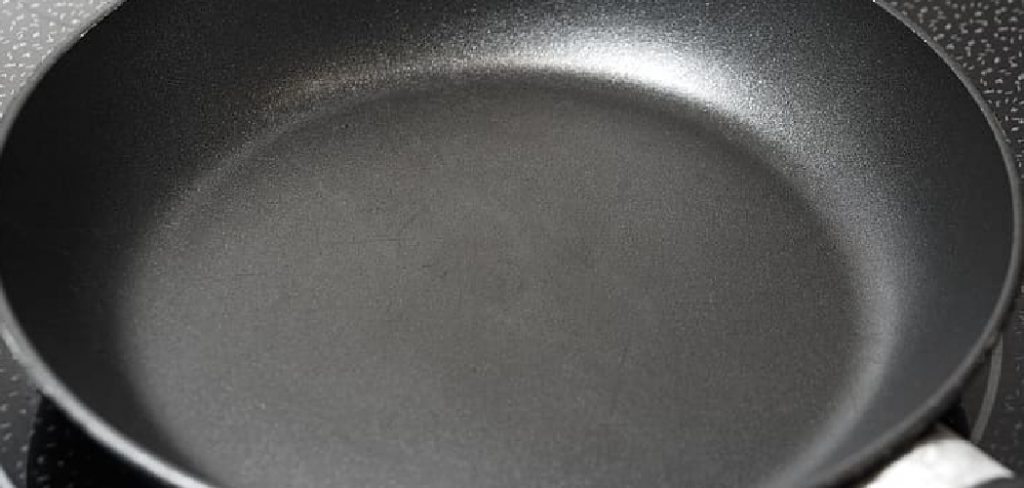
This blog post will discuss the best techniques for measuring cast iron skillets and pots. From determining their diameter and circumference to specific measurements for each food type cooked – we’ve got it covered!
So, if you’re curious about how to measure a cast iron pan- put on your favorite apron, and let’s dive deeper into understanding how deep or shallow those measurements should be.
What Will You Need?
Before we begin, let’s gather all the tools we need to measure a cast iron pan successfully.
- Measuring Tape: This is the most crucial tool to measure your cast iron pan. It will help you determine both the diameter and circumference of the pan.
- Ruler: A ruler is another essential tool for measuring a cast iron pan, especially if you don’t have a measuring tape.
- Food Items: To fully understand how much food your pan can hold, you’ll need various food items to measure.
- Writing Utensils: Grab a pen or pencil to jot down your measurements for future reference.
Now that we have everything ready, let’s get to measuring!
10 Easy Steps on How to Measure a Cast Iron Pan:
Step 1: Take Off the Handle
Before you start measuring, taking off any protruding handles that may alter your measurements is essential. Loosen up the screws and remove them, taking extra care not to damage the pan. It’s best to measure the pan without any handles attached.
Step 2: Measure the Diameter
Place the starting point of your measuring tape or ruler at the inner edge of one side of the pan. Stretch the tape straight across to the opposite inner edge. This measurement is your pan’s diameter. Ensure the measuring tape or ruler is stretched tight and flat across the pan for an accurate reading. Write down your measurement.
Step 3: Measure the Depth
To measure the depth of your cast iron pan, place one end of your ruler or measuring tape at the bottom and extend it to the top edge. Make sure to do this in the center of the pan for accuracy, as the sides may slope upwards. This will give you the depth of the pan. Be sure to keep the ruler straight and vertical for an accurate measurement. Record this number as well.
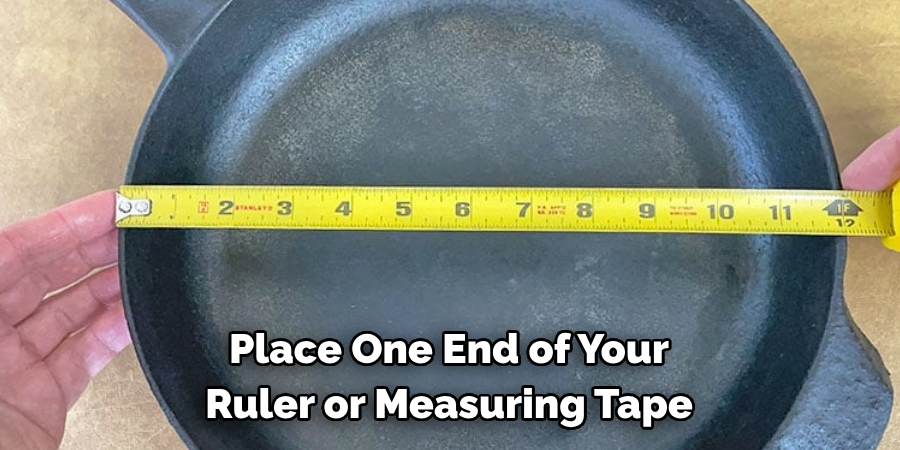
Step 4: Measure the Circumference
To measure the circumference of your cast iron pan, wrap the measuring tape around the top edge, ensuring it is lined up with the inner edge. Hold it tight to ensure it is snug against the pan’s surface for an accurate reading. This measurement is your pan’s circumference. Record this number as well.
Step 5: Calculate Pan’s Volume
Now that you have your pan’s diameter and depth, you can calculate its volume, which will help you understand how much food it can hold. To calculate the volume of your cast iron pan, use the formula for the volume of a cylinder: V = πr²h, where “r” is the radius (half of the diameter), “h” is the height (the pan’s depth), and π is approximately 3.14. This volume will be in cubic units, typically cubic inches, if you use inches for your other measurements. Record this number for future reference.
Step 6: Test With Food Items
To further understand the capacity of your cast iron pan, measuring using actual food items can be helpful. This can give you an idea of how much of a specific food your pan can hold and, thus, can help improve your cooking. For instance, you can see how many chicken breasts fit comfortably or how much sauce it can contain without overflowing. Be sure to record these observations for future reference.
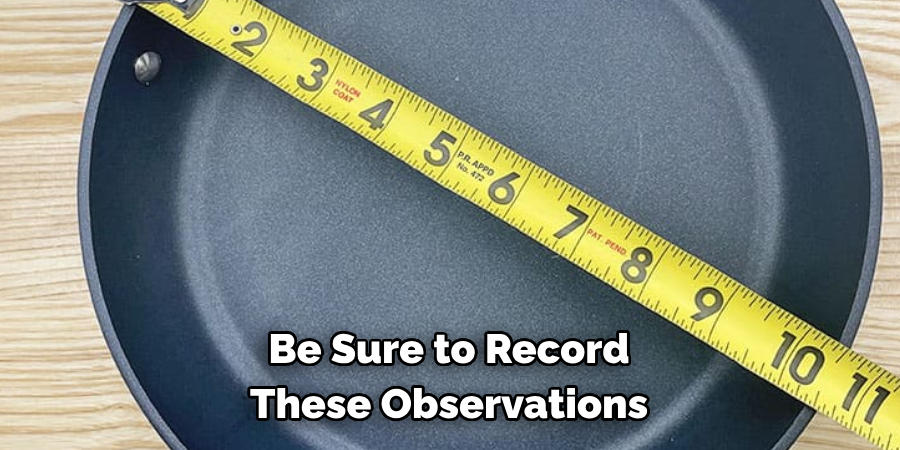
Step 7: Take Note of the Stove Size
While not directly related to the actual measurements of your cast iron pan, it’s also beneficial to note the size of your stove burner or hob. This information is crucial as it may affect how evenly your pan heats up and how well your food cooks. If your pan is more significant than your burner, you may experience unequal heat distribution. Similarly, if your pan is too small, it cannot use the heat effectively. Record the size of your burner for future reference.
Step 8: Understand the Weight
Cast iron pans are considerably heavier than other types of cookware. It’s crucial to understand the weight of your pan as it can impact both cooking and cleaning. A heavier pan will retain heat better, but it may also be more challenging to maneuver and wash.
To measure the weight, simply use a kitchen scale. If the weight feels too heavy for you when empty, consider that it will be even heavier when filled with food. Write down the pan’s weight for future reference, and consider this when deciding on meals to cook with this pan.
Step 9: Consider the Shape
Most cast iron pans are round, but square or other shapes are also available. The shape of your pan can impact how your food cooks and how easy it is to clean it. Round pans are more common and may provide even heating, while square pans might hold more food but might be more challenging to clean due to corners. Be aware of the shape and consider it when you’re planning your meals.
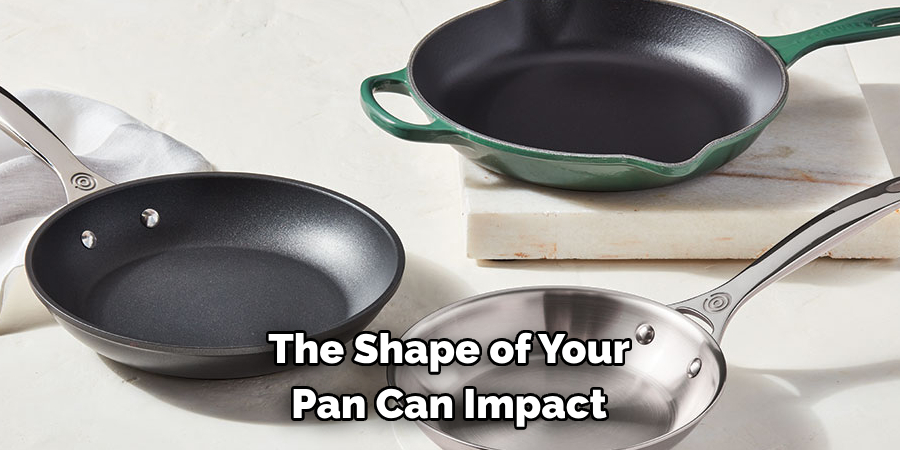
Step 10: Clean and Store
After you’ve taken all the necessary measurements, cleaning and storing your pan properly is essential to ensure its longevity. Clean the pan with warm water and a non-abrasive sponge or brush. Avoid using soap, as it can strip the pan’s seasoning.
Dry it thoroughly to prevent rusting, then lightly oil the pan inside and out to keep it seasoned. It’s best to keep the pan in a cool, dry place away from moisture when storing. If you plan to stack it with other cookware, consider placing a layer of paper towel in between to prevent scratching. Finally, remember the more you use your cast iron pan, the better it becomes.
By following these ten easy steps, you can accurately measure a cast iron pan.
5 Additional Tips and Tricks
- Use a Tape Measure: Using a tape measure is the most accurate way to measure a cast iron pan. Measure across the top of the pan from one inside edge to the other. This gives you the top diameter.
- Check the Bottom Diameter: While the top diameter is commonly used, some recipes or stove settings may refer to the bottom diameter. To find this, measure across the bottom of the pan from one side to the other.
- Consider the Depth: For dishes where the volume of the pan matters (like deep-dish pizza or particular cakes), don’t forget to measure the depth of the pan by placing the tape measure at the bottom of the pan and reading the number at the top edge.
- Look for a Manufacturer’s Number: Many cast iron pans have a number etched into the handle or the bottom. This number often corresponds to the pan’s size in inches, though it may only be partially accurate, particularly for older pans.
- Remember That Size Can Affect Cooking: The size of your cast iron pan can affect cooking times and temperatures. Larger pans can hold more heat, so you may need to adjust your cooking time or stove temperature accordingly.
With these tips and tricks, you can accurately measure your cast iron pans for any recipe.
5 Things You Should Avoid
- Avoid Guesswork: Never estimate the size of your cast iron pan, as this can lead to uneven cooking or even risk overflows. Always use an accurate measuring tool.
- Don’t Neglect the Handle: While the handle isn’t factored into measuring the cooking surface, be mindful of its length when considering storage or oven space.
- Never Use a Ruler for Depth Measurement: A ruler can be misleading when measuring the depth of a pan due to its width. Always use a tape measure for precise readings.
- Avoid Ignoring Manufacturer’s Instructions: While following general rules for pan sizes, always consider the manufacturer’s recommendations, as sizes can vary amongst brands.
- Don’t Overfill Based on Measurements: Just because a pan measures a specific diameter or depth doesn’t mean you should fill it to the brim. Always leave some space to prevent spills and allow for proper cooking.
By following these tips, you can accurately measure your cast iron pans and avoid common pitfalls.
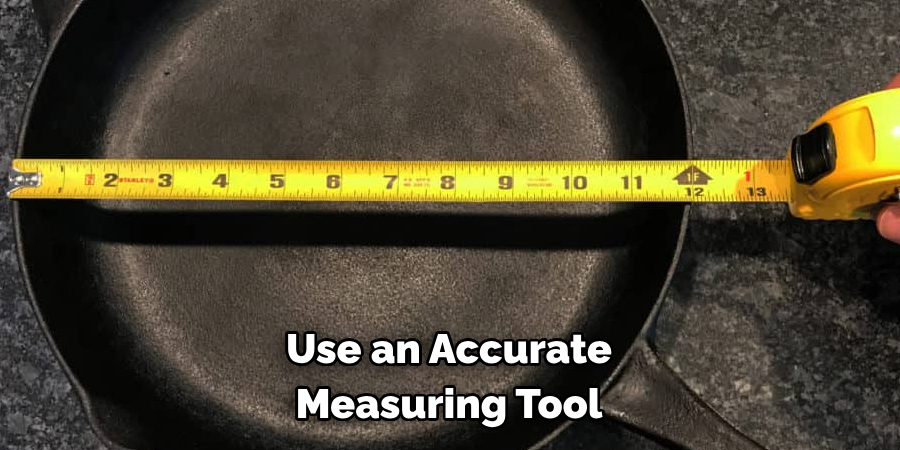
Conclusion
As we have seen, how to measure a cast iron pan is key to making sure you get the right size for your needs. Moreover, now that you know the different ways to measure it, you’ll be well prepared when it comes time to make your purchase. But more than just responding to a need, investing in a cast iron pan is investing in yourself and your cooking skills.
Cast iron pans bring flavor and richness that traditional pans can’t quite match, and while they may require some extra TLC when handling them, mastering the use of one is something that every home chef should have on their checklist.
So go forth confidently, knowing how best to measure a cast iron pan! Put all this knowledge into practice – get yourself a cast iron pan and start cooking deliciously!
You can check it out to Design Sheet Metal Parts
Edmund Sumlin is a skilled author for Metal Fixes, bringing 6 years of expertise in crafting a wide range of metal fixtures. With a strong background in metalwork, Edmund’s knowledge spans various types of fixtures, from decorative pieces to functional hardware, blending precision with creativity. His passion for metalworking and design has made him a trusted resource in the industry.
Professional Focus:
- Expert in Metal Fixtures : Edmund aesthetic specializes in creating durable and innovative metal fixtures, offering both appeal and functionality. His work reflects a deep understanding of metalworking techniques and materials.
- Sustainability Advocate : He is dedicated to using sustainable practices, ensuring that every fixture is crafted with eco-friendly methods while maintaining high-quality standards.
In his writing for Metal Fixes, Edmund provides valuable insights into the latest trends, techniques, and practical advice for those passionate about metal fixtures, whether they are professionals or DIY enthusiasts. His focus on combining artistry with engineering helps others discover the true potential of metal in design.


